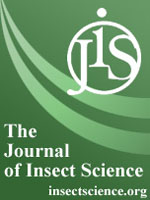Insects that are secondarily adapted to aquatic environments are able to sense odors from a diverse array of sources. The antenna of these insects, as in all insects, is the main chemosensory structure and its input to the brain allows for integration of sensory information that ultimately ends in behavioral responses. Only a fraction of the aquatic insect orders have been studied with respect to their sensory biology and most of the work has centered either on the description of the different types of sensilla, or on the behavior of the insect as a whole. In this paper, the literature is exhaustively reviewed and ways in which antennal morphology, brain structure, and associated behavior can advance better understanding of the neurobiology involved in processing of chemosensory information are discussed. Moreover, the importance of studying such group of insects is stated, and at the same time it is shown that many interesting questions regarding olfactory processing can be addressed by looking into the changes that aquatic insects undergo when leaving their aquatic environment.
How to translate text using browser tools
1 May 2011
A Review of Chemosensation and Related Behavior in Aquatic Insects
José G. Crespo

Journal of Insect Science
Vol. 11 • No. 62
May 2011
Vol. 11 • No. 62
May 2011
antennal morphology
neurophysiology
odors
olfaction
sensilla




